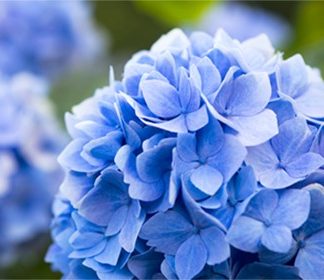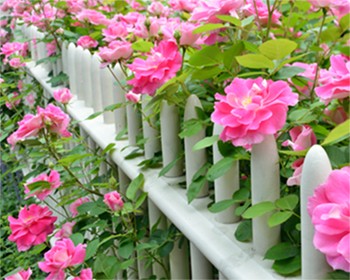Shrubs
The most pleasing landscapes have a balanced mixture of plant heights and shapes. Shrubs vary in size from just a few inches tall to several feet above the average person’s height. They create a transition between the trees and the ground and are used to create privacy, to define property lines, and to provide form and structure in the garden.
-

Evergreen Shrubs
-

Spring Blooming Shrubs
-

Summer Blooming Shrubs
-

Fall & Winter Color Shrubs
-

Accent Shrubs
-

View All (241)
More About Shrubs
Shrubs help to create your landscape’s personality. Do you want masses of flowers, brilliant foliage colors, a privacy screen, or a low-growing hedge? Do you hope to welcome birds and butterflies? There are many types of shrubs to meet your all of your needs.
Deciduous Shrubs
Deciduous shrubs offer such an amazing array of features that it’s no wonder that they are some of the most popular plants! With all the flowering shrubs available, where do you start? Most have showy displays of flowers, often blooming for long periods of time. While most deciduous shrubs flower during the spring and summer, others bloom in fall and even in winter. There is such a great variety of flowering shrubs, you’ll want some of each. Try mixing several shrubs together with different bloom times to create a garden that will stay in bloom all season!
Some flowering shrubs, such as spireas, Knockout roses and abelias, have colorful new growth in the spring and again in the fall providing even more garden color.
Other deciduous shrubs don’t bloom but do offer spectacular foliage color from spring through late-fall. These plants ensure that there is always something interesting happening in the garden. Great examples include Firepower nandina, Crimson Pygmy barberry and Spilled Wine weigela.
Deciduous shrubs prepare for winter by dropping their leaves. During that process the leaves can turn brilliant shades of color, such as yellow, red, purple and orange, providing an autumn spectacle. It is always a beautiful sight to see! Try planting viburnum, oakleaf hydrangea or Virginia sweetspire to add lovely fall color to the landscape.
Many shrubs offer other interesting features that you will only notice in winter. For example, red-twig dogwoods have brightly colored bark that stands out in the colorless landscape. Others have patterned bark that catches the eye. And some have handsome branching structures that add architectural interest to the landscape. Some of the most popular deciduous shrubs include hydrangeas, lilacs, viburnum, roses, and forsythia.
Evergreen Shrubs
Evergreen shrubs are the winter garden superstars! These shrubs do not drop their leaves, kindly offering us a range of colors to enjoy during the otherwise monotonous winter landscape. While many evergreen shrubs are green, others have showy foliage colors, such as yellow, red or blue. Gold Mop cypress is an excellent example of a colorful evergreen shrub. Bright gold foliage stands out in winter, and the shrub is also loved for its spectacular shape with very long, narrow foliage. Not only is it colorful, but it’s graceful drooping branches add architectural interest to the garden! Blue Star juniper is a powdery-blue shrub that creates an asymmetrical, low-growing mound. Its blue color stands out in the winter landscapes and pairs nicely with purple, red and yellow deciduous shrubs during the warm seasons. There are so many evergreens to get to explore.
Shrubs with Berries
Beautiful berries add yet another element of garden interest and color. There are both evergreen and deciduous shrubs that produce beautiful bright berries. Berries form in the spring and generally turn color in the late-summer. The most common berry color is red. Be sure to include berry-producing shrubs if you want to welcome birds to your garden! Some shrubs that produce showy berries include winterberry holly, viburnum and beautyberry.
When you walk through a garden you should feel at peace and the garden should offer you a sense of place. It is great to have some trees and perennials, but it is the shrubs that create interest at eye level.
